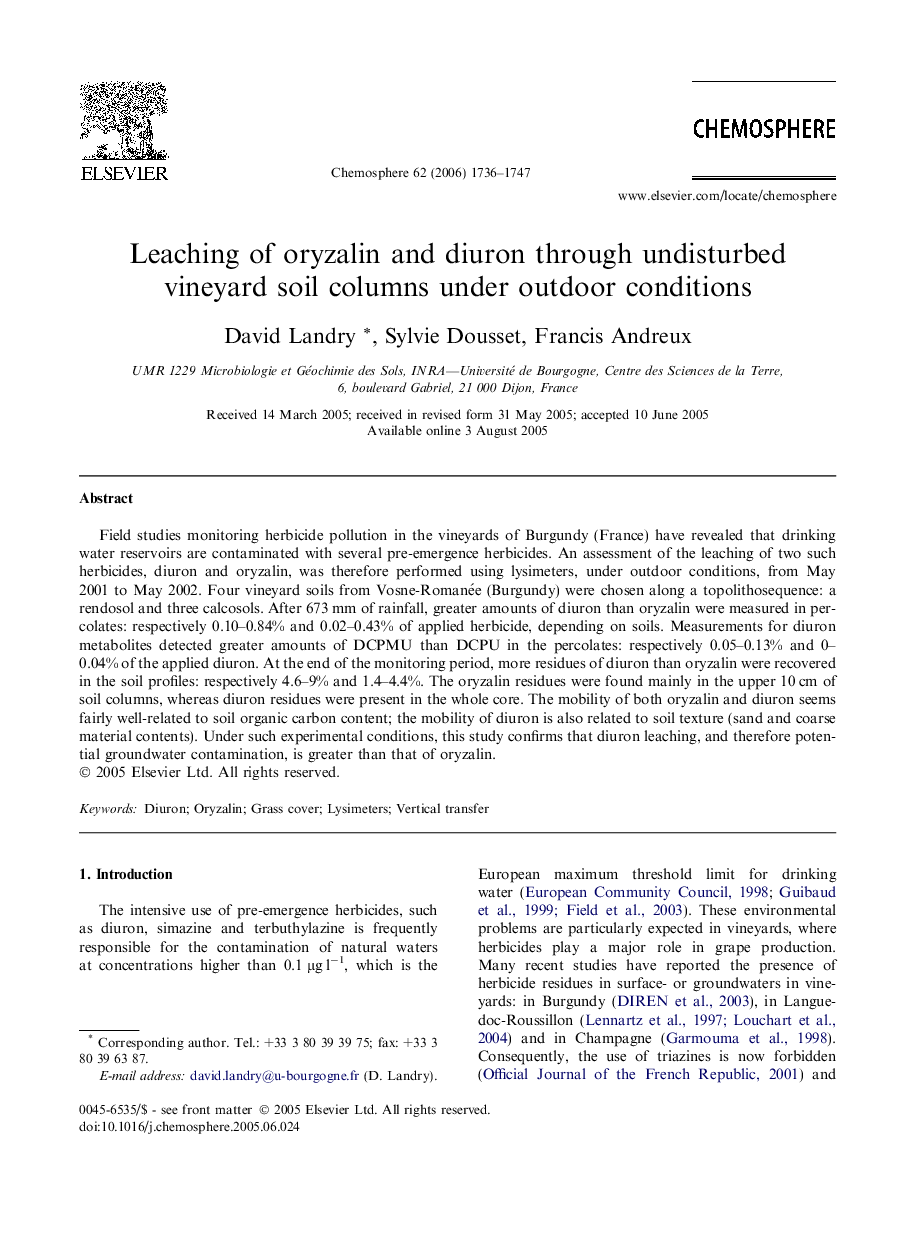| Article ID | Journal | Published Year | Pages | File Type |
|---|---|---|---|---|
| 4416779 | Chemosphere | 2006 | 12 Pages |
Field studies monitoring herbicide pollution in the vineyards of Burgundy (France) have revealed that drinking water reservoirs are contaminated with several pre-emergence herbicides. An assessment of the leaching of two such herbicides, diuron and oryzalin, was therefore performed using lysimeters, under outdoor conditions, from May 2001 to May 2002. Four vineyard soils from Vosne-Romanée (Burgundy) were chosen along a topolithosequence: a rendosol and three calcosols. After 673 mm of rainfall, greater amounts of diuron than oryzalin were measured in percolates: respectively 0.10–0.84% and 0.02–0.43% of applied herbicide, depending on soils. Measurements for diuron metabolites detected greater amounts of DCPMU than DCPU in the percolates: respectively 0.05–0.13% and 0–0.04% of the applied diuron. At the end of the monitoring period, more residues of diuron than oryzalin were recovered in the soil profiles: respectively 4.6–9% and 1.4–4.4%. The oryzalin residues were found mainly in the upper 10 cm of soil columns, whereas diuron residues were present in the whole core. The mobility of both oryzalin and diuron seems fairly well-related to soil organic carbon content; the mobility of diuron is also related to soil texture (sand and coarse material contents). Under such experimental conditions, this study confirms that diuron leaching, and therefore potential groundwater contamination, is greater than that of oryzalin.
